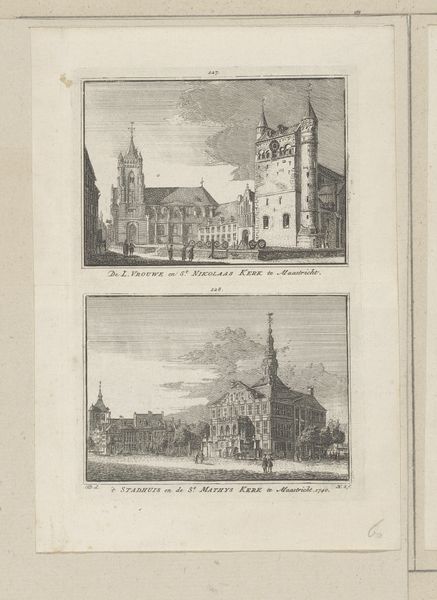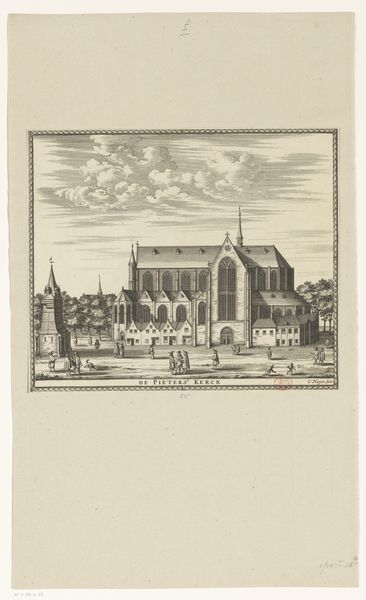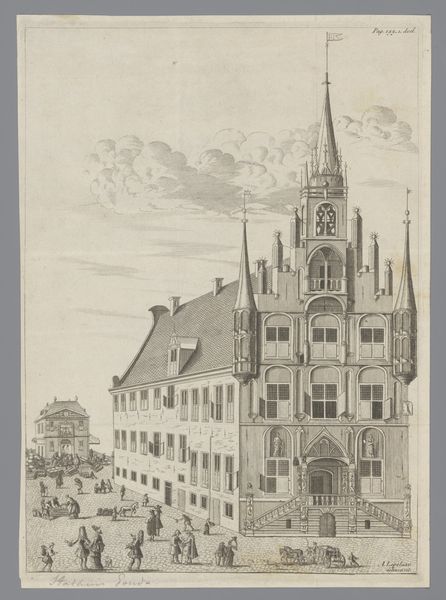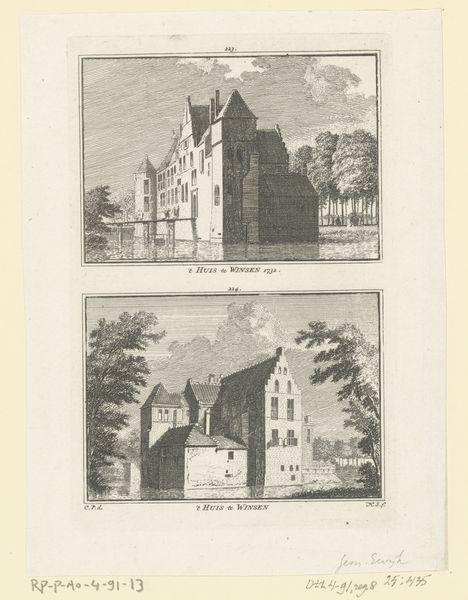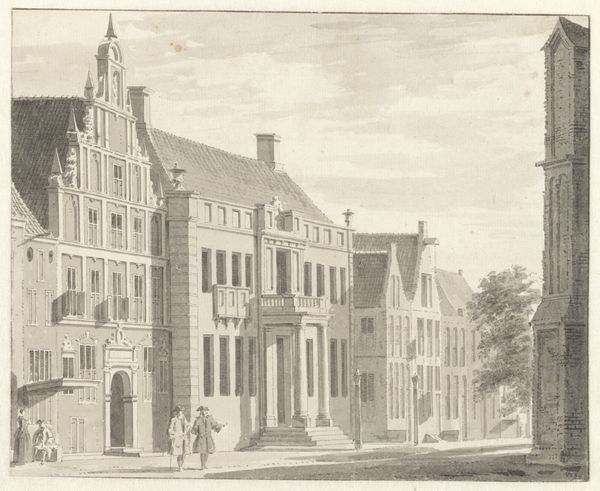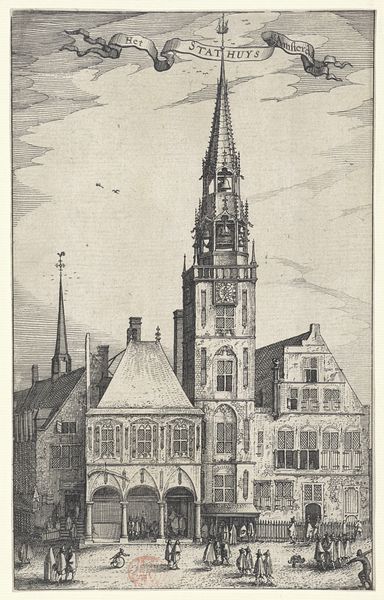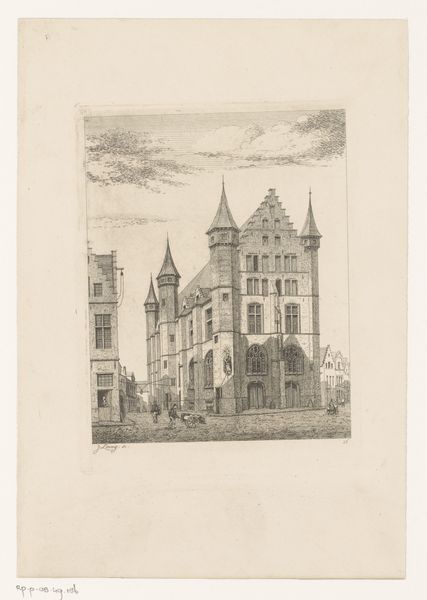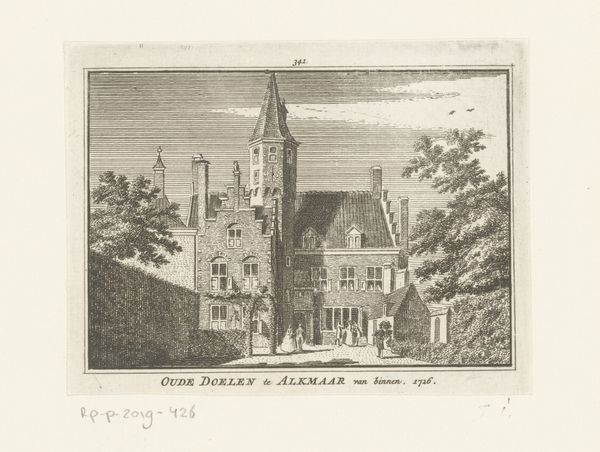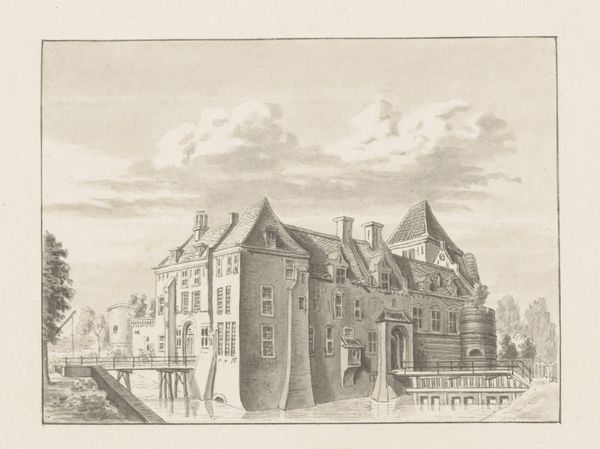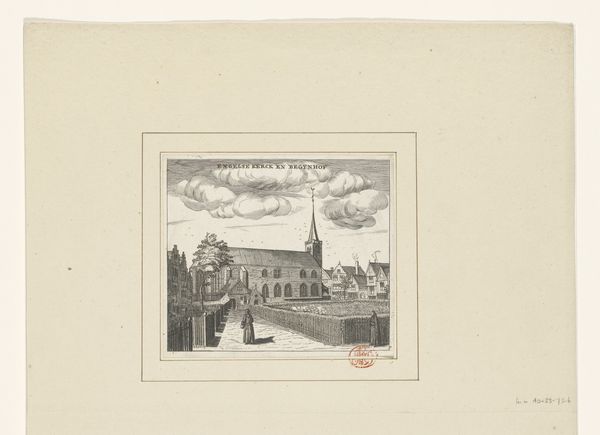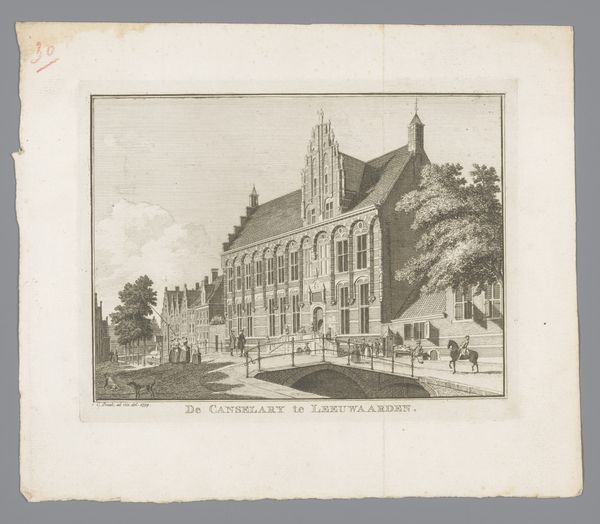
print, paper, engraving
#
baroque
#
dutch-golden-age
# print
#
paper
#
cityscape
#
engraving
Dimensions: height 176 mm, width 111 mm
Copyright: Rijks Museum: Open Domain
Curator: Allow me to introduce “Gezicht op het stadhuis van Tholen," or "View of the Town Hall of Tholen," an engraving by Jan Caspar Philips from the Dutch Golden Age, circa 1747-1760. It resides here at the Rijksmuseum. Editor: My first thought is that the monochromatic palette evokes a sense of timelessness, a stoic documentation of a place seemingly untouched by the dramatic upheavals of the 18th century that swept across the European continent. Curator: Precisely! Philips, through the meticulous art of engraving, captures the architectural essence of Tholen. Notice how the play of light and shadow emphasizes the steeple, anchoring the composition. It becomes an almost iconic symbol, a visual manifestation of civic stability. Editor: The Town Hall itself strikes me as a kind of liminal space in this image—not only physically mediating the street but symbolically mediating an older patriarchal establishment. But, from a contemporary standpoint, it evokes feelings that are a bit more complicated than stability, right? Like, which bodies and ideologies did this so-called civic stability really serve and represent at the time? Curator: Ah, a pertinent question. While we might see these architectural details as symbolic, consider also how prints like this served as documents of record, solidifying identity during a period of intense trade and burgeoning national identities. What you read as stoic, I understand as a deliberate projection of Dutch pride and power. Editor: A projection carefully constructed. But even the seemingly "objective" rendering of architecture cannot escape social conditioning, can it? I read in these precisely drawn lines a confirmation of particular socioeconomic and power structures. We can acknowledge pride, perhaps even accomplishment, while recognizing those were, for many, eras of subjugation. Curator: That’s an astute reading. Even in what appears to be a straightforward representation, we find layers of meaning, revealing the values—and perhaps biases—of its time. The engraving, intended to memorialize, ironically holds space for alternative readings, prompting us to question those very values today. Editor: Exactly! It calls for continuous interrogation. In our role as viewers today, we can better see that visual representation plays such a key role in the production and dissemination of ideologies, be they implicit or overt. I see “Gezicht op het stadhuis van Tholen” as more than just civic portraiture; I view it as an invaluable historical record precisely because of the conversations it initiates. Curator: Agreed. I hadn’t quite considered the work as a springboard for critical conversation, but you are spot on: its iconic facade conceals within it potent interrogations of authority and societal framework.
Comments
No comments
Be the first to comment and join the conversation on the ultimate creative platform.
